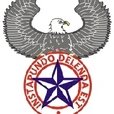Dogs graduate from bomb-sniffing school
 FRONT ROYAL, Virginia (Reuters) - U.S. Homeland Security Secretary Michael Chertoff on Thursday paid tribute to one of America's most useful weapons in the war on terrorism -- the nose of a well-trained dog.
FRONT ROYAL, Virginia (Reuters) - U.S. Homeland Security Secretary Michael Chertoff on Thursday paid tribute to one of America's most useful weapons in the war on terrorism -- the nose of a well-trained dog.Chertoff presided over a graduation ceremony for 10 dogs and their trainers, handing out badges on dog collars at the Customs and Border Protection Canine Enforcement Training Center. After having completed a 13-week program, the dogs will be used to sniff out bombs, drugs and people trying to sneak into the country.
One member of the graduating class, Slick, a German shepherd paired with handler Wilfredo Garcia, was so excited he jumped up on his hind legs to greet Chertoff.
"Dogs are a vital security resource," Chertoff said at the training center in Front Royal, about 70 miles west of Washington. "When it comes to protecting the homeland, our canine teams have proven time and time again they have a tremendous intrinsic value."
Despite new high-tech devices, Chertoff said a dog is often the best equipped to quickly detect explosives, narcotics and even people being smuggled into the country.
"I don't think anything has yet surpassed the canine team," he said.
Customs and Border Protection officials said dogs can screen a vehicle at the border in seconds and do a thorough exam in minutes. This compares to at least 20 minutes for an agent or officer to conduct even a cursory check of a vehicle.
There are currently more than 800 dog teams working around the United States, with most focused on the borders.
Since the September 11, 2001, attacks, Customs and Border Protection has started training more dogs.
"9/11 promoted the canine teams to a new and more significant mission, which is to protect us against acts of terrorism," Chertoff said.
If a dog finds a trace of a drug or weapon, it is instructed to stop and sit. A dog named Skeet did just that in a demonstration for Chertoff, sitting down behind a car in which a shoulder-launched missile was hidden in the trunk.
P.S. In my opinion dogs are great in many circumstances but for "missing people" I feel the bloodhound is in a class of it's own. If you research that breed, that is the reason for the excess skin around the face the scent is kept within. Many small municipalities I feel are under funded or just use the wrong trained dogs for what specific need is at hand. Several examples to this (Children in the trunk, Aruba, missing children cases and searching for criminals on the lose, etc.) How good is your dog at seeking things out besides food?? (smiling)P.S. OR if you had one what would you want it to do? (sorry for the late update)
All comments have been saved and hidden due to transferring to Haloscan 7 comments






































<< Home